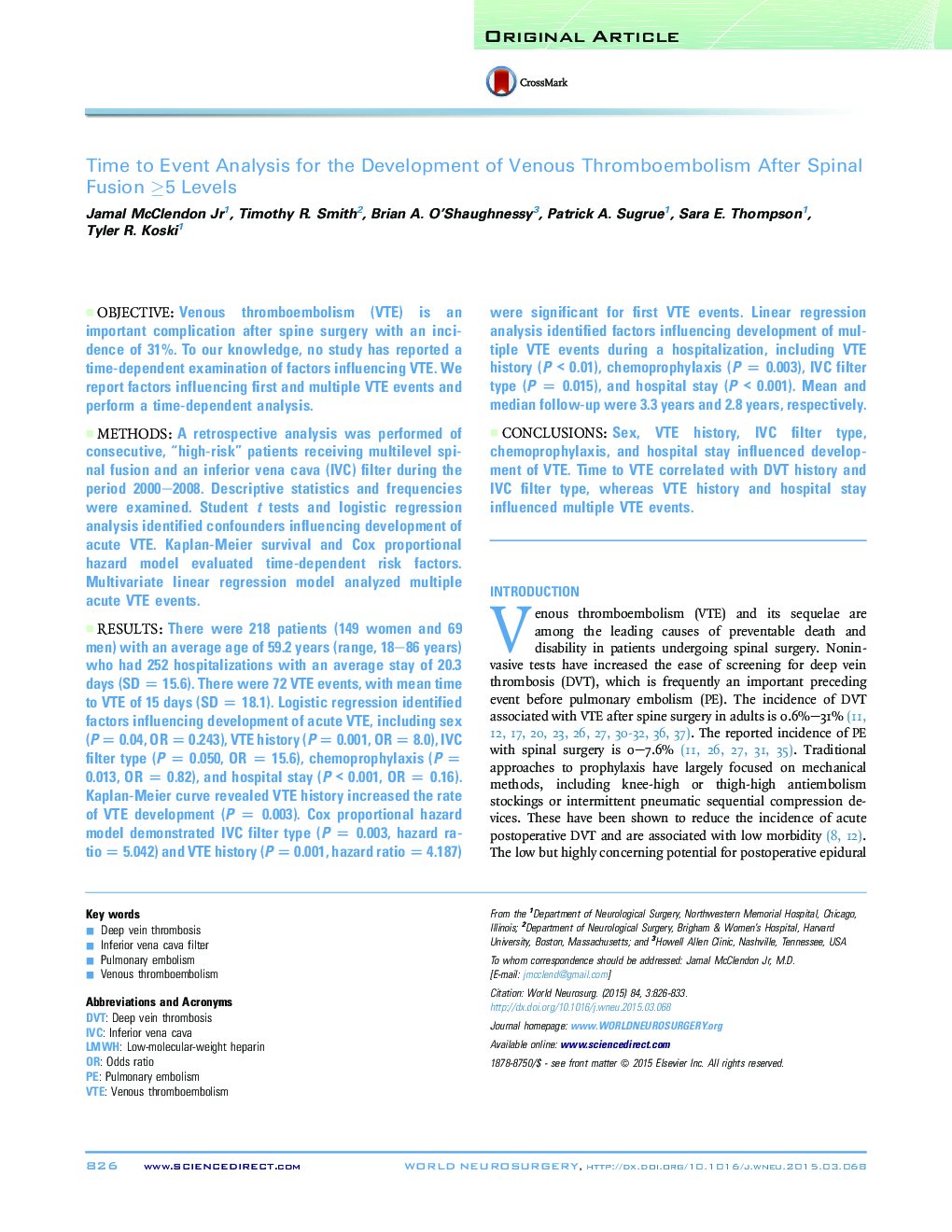| کد مقاله | کد نشریه | سال انتشار | مقاله انگلیسی | نسخه تمام متن |
|---|---|---|---|---|
| 6045430 | 1190907 | 2015 | 8 صفحه PDF | دانلود رایگان |

ObjectiveVenous thromboembolism (VTE) is an important complication after spine surgery with an incidence of 31%. To our knowledge, no study has reported a time-dependent examination of factors influencing VTE. We report factors influencing first and multiple VTE events and perform a time-dependent analysis.MethodsA retrospective analysis was performed of consecutive, “high-risk” patients receiving multilevel spinal fusion and an inferior vena cava (IVC) filter during the period 2000-2008. Descriptive statistics and frequencies were examined. Student t tests and logistic regression analysis identified confounders influencing development of acute VTE. Kaplan-Meier survival and Cox proportional hazard model evaluated time-dependent risk factors. Multivariate linear regression model analyzed multiple acute VTE events.ResultsThere were 218 patients (149 women and 69 men) with an average age of 59.2 years (range, 18-86 years) who had 252 hospitalizations with an average stay of 20.3 days (SD = 15.6). There were 72 VTE events, with mean time to VTE of 15 days (SD = 18.1). Logistic regression identified factors influencing development of acute VTE, including sex (P = 0.04, OR = 0.243), VTE history (P = 0.001, OR = 8.0), IVC filter type (P = 0.050, OR = 15.6), chemoprophylaxis (P = 0.013, OR = 0.82), and hospital stay (P < 0.001, OR = 0.16). Kaplan-Meier curve revealed VTE history increased the rate of VTE development (P = 0.003). Cox proportional hazard model demonstrated IVC filter type (P = 0.003, hazard ratio = 5.042) and VTE history (P = 0.001, hazard ratio = 4.187) were significant for first VTE events. Linear regression analysis identified factors influencing development of multiple VTE events during a hospitalization, including VTE history (P < 0.01), chemoprophylaxis (P = 0.003), IVC filter type (P = 0.015), and hospital stay (P < 0.001). Mean and median follow-up were 3.3 years and 2.8 years, respectively.ConclusionsSex, VTE history, IVC filter type, chemoprophylaxis, and hospital stay influenced development of VTE. Time to VTE correlated with DVT history and IVC filter type, whereas VTE history and hospital stay influenced multiple VTE events.
Journal: World Neurosurgery - Volume 84, Issue 3, September 2015, Pages 826-833